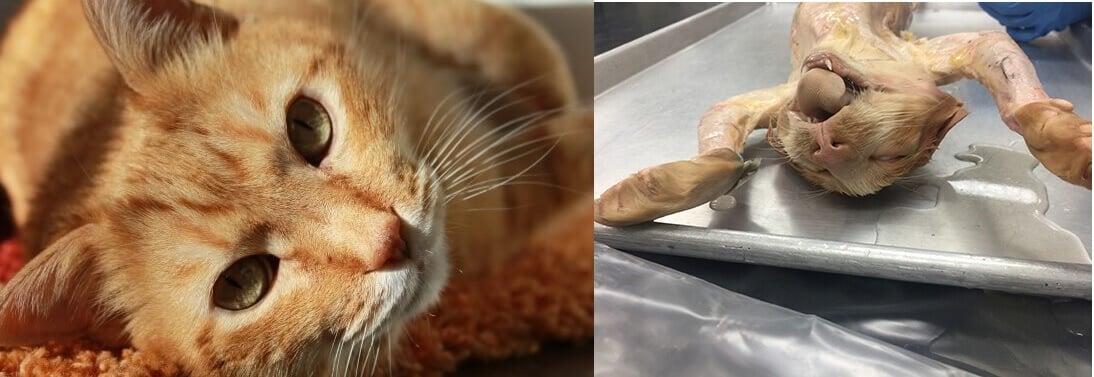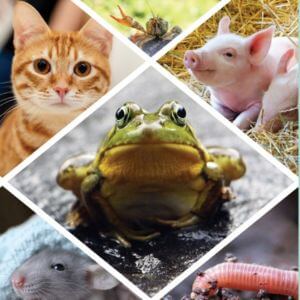
Dissection Is Dangerous, Unethical, and Unnecessary: Here's Why
Animal dissection is a classroom activity that hasn’t changed in a century, resulting in millions of animals being killed for dissection annually and cheating students out of quality educational experiences that come with current animal-free anatomy tools. There’s no educational value in making students cut into animals’ corpses, but the many benefits of humane, non-animal instruction—such as digital dissection—are well documented. Dozens of peer-reviewed studies show that dissecting animals is bad science, whereas when students use modern methods, they learn faster and are able to repeat material until they’re proficient. Studies also show that students prefer using humane alternatives such as interactive simulations and anatomical models. Not only does non-animal methods save animals from being killed and used for dissection but also provides an inclusive learning atmosphere for all students. Educational standards recognize this and do not require animal dissection or even mention it in the NGSS, International Baccalaureate, or AP curricula.

Having children cut an animal open—a misguided but sometimes sanctioned classroom activity—teaches them that living beings are disposable and downplays the fact that they were once alive and, in most cases, killed exclusively for these exercises. This is a harmful lesson, especially considering the increase that we’re currently seeing in incidents of cruelty to animals perpetrated by juveniles and an epidemic of school bullying.
In addition to the dangers of desensitizing students to the suffering of living beings, animal dissection often exposes them to harmful chemicals, such as formaldehyde and formalin. Formaldehyde is used as a preservative and is also found in cigarette smoke—it’s classified as a human carcinogen, and repeated exposure to low levels may cause respiratory difficulty, eczema, and skin sensitization.

In the 21st century, there are endless animal-free options to increase learning comprehension and keep students engaged! Virtual dissection simulations with extra lab features, augmented reality technology, and hands-on dissectible models like Kind Frog give students a memorable experience to learn about anatomy without harming animals! Students can now have multiple attempts with dissection simulations, explore labs that go beyond a classroom setting, and have something to study with all throughout the school year!
How You Can Help End Dissection

Teachers
Educators are increasingly adopting creative and inspired ways to teach life science without the animal. Teachers are in a unique position to effect change both in their own classroom and throughout their school. Meeting curricular goals without harming animals is a win-win situation for students, teachers, and schools. Like the most respected medical schools in the US who no longer use animals to teach students, teachers can use humane, non-animal methods to teach about the body and even get these resources for free with TeachKind Science’s pilot program.
Here are some ways teachers can help animals:
Pledge not to use animals in your classroom. Share information with your students and fellow staff members about your decision to use humane alternatives.
If your school is using animals as teaching “tools,” explain the cruelty inherent in dissecting and experimenting on animals, the many risks involved, and the harmful message that using animals in the classroom sends to students. You can even share with them about TeachKind Science’s pilot program where they can get non-animal anatomy resources for free for their classroom.
Write a letter to your principal and school board asking them to implement a policy banning animal projects in the district. Be sure to include all the pertinent information, and feel free to contact us if you need any assistance.

Parents
Parents and guardians have an important responsibility to ensure that their children are taught using the most effective methods and that educators are incorporating humane education principles into the curriculum. Whether your child is attending in person, distance learning, or homeschooling, you can encourage the use of non-animal science lessons that teach children to value humans and animals, build prosocial behavior, and are consistent with character education initiatives. Click here to get four easy steps in getting your child’s school involved with humane, animal-free teaching methods.

Students
Many empowered students are taking a stand against animal dissection before it takes place in their classes by expressing their concerns to their teacher and opting out. If you’d like to replace animal dissection at your school, contact us at hello@peta2.com and visit peta2.com/Dissection to find out your dissection rights as a student and how you can take action.
In college? Check out PETA’s youth-led movement, peta2, for more ways to take action for animals. E-mail hello@peta2.com for information on opting out of animal dissection and addressing animal experimentation at your school.
Join TeachKind Science's Pilot Program for free!
Educators can receive non-animal dissection resources like Kind Frog at no cost with TeachKind Science’s pilot program. Inquire about TeachKind’s pilot program here to see if you or your school would qualify.
TeachKind Science traveled across the country to teacher conferences to share Kind Frog, our latest hands-on tool that’s revolutionizing the dissection experience! Teachers are loving the Kind Frog’s ability to mimic a hands-on dissection with its accurate coloration and inclusivity to all students but without the toxic chemicals involved with an animal dissection. Watch teachers’ reactions to Kind Frog and what they had to say about it below!
Contact us about our pilot program and how your classroom can incorporate humane science!
TeachKind Science provides non-animal dissection resources for free to classrooms every year through our pilot program and works step-by-step with teachers in finding immersive, humane ways to teach life sciences.
By submitting this form, you’re acknowledging that you have read and agree to our privacy policy and agree to receive e-mails from us.



